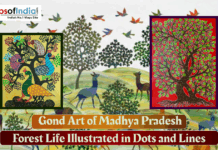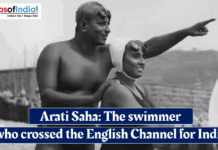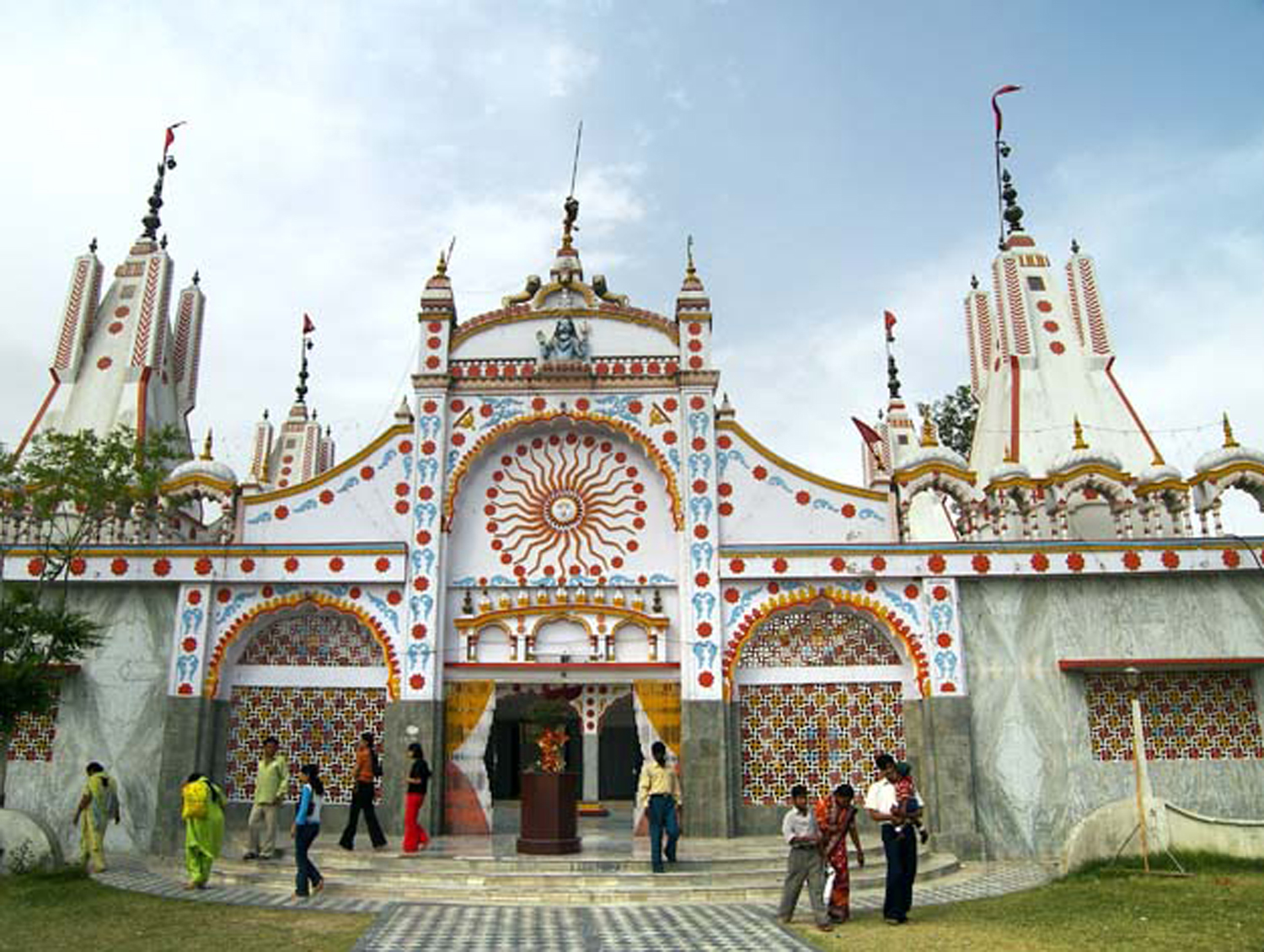“Ih phulkari meri maan ne kadhi, iss noo ghut ghut japhiyan paawan”
(“My dear mother has embroidered this phulkari, I embrace it again and
again with affection”) – Traditional Punjabi song
Phulkari means ‘flower craft’. Phulkari, the rural embroidery tradition of Punjab, is like an embroidered shawl but very vibrant and attractive. Traditionally, Phulkari was made of thick fabrics especially a thick cotton fabric known as khaddar. Four colors of khaddar were generally used where each color had its own significance– white used by old women or widows, red used by young girls and brides-to-be, blue and black were kept for daily use. The khaddar fabric was then covered all over with striking floral patterns. Phulkari that is covered immensely with embroidery so that you cannot see the fabric beneath it is known as ‘bagh’ – A garden.
In Western Punjab (Pakistan), khaddar is stitched after completing the embroidery so one can notice a slightly distorted design whereas in East Punjab (India) khaddar is stitched before the embroidery. Embroidery is done on the wrong side of khaddar with silk threads known as pat.
Some of the floral patterns are used to define the class of the wearer as well. For instance, phulkari having flowers made from cluster stitch was worn by low class females where as phulkari having flowers made in darning stitch was worn by females belonging to high class.
Though every Punjabi girl wants to have a phulkari, this traditional textile of Punjab is disappearing very quickly. Once a prominent part of the rich heritage of Punjab, where for every occasion females used to make phulkaris, it has now been confined to museums. One might catch a glimpse of it at some Punjabi wedding.
Types of Phulkaris
Bagh – The Garden
The phulkari that is covered all over with the embroidery is known as bagh and it came into existence in the second half of the 19th century when people became passionate about phulkari work. To make such a piece, one needs lots of patience, as it may take even a year to complete the entire task. Traditionally, the bagh was kept only for special occasions.
Thirma
The distinguishing feature of thirma is its white khaddar that is a symbol of purity. Because of its white color, it was often worn by elderly women and widows. The color of threads used for embroidery range from red to pink.
Darshan Dwar
Darshan dwar was a typical and special phulkari created to be offered at gurudwaras. Darshan dwar literally means “the gate to see God”. This type of phulkari was made in East Punjab. Along with floral patterns, figures of human and animals were also made on this.
Sainchi Phulkari
Village life of Punjab was depicted in sainchi phulkari and this style was restricted to very few areas of Punjab such as Firozpur and Bhatinda districts. The pattern used to range from local animals, farmers, wrestlers, weaver to trains and other means of transport.
Vari-da-bagh
Vari-da-bagh was given as a gift to the bride by her in-laws upon entering her new home. It was always made on orange-reddish khaddar and, for embroidery, only a single golden- or orange-colored pat was used all over the khaddar except for borders.
Bawan Bagh (Bawan Phulkari)
In Punjabi, bawan means 52. This means that 52 different patterns were made to complete this phulkari. It was actually a display of samples used by professional embroiderers. So you will rarely find this phulkari.
Chope
Chope phulkari is made by the bride’s maternal grandmother (naani). She starts making chope at the time of her grand-daughter’s birth. Both sides of chope phulkari contain the same design that was created by using the holbein stitch. Chope is used for wrapping a bride after her ritual bath on her wedding day. For this reason, the size of chope used to be more than phulkari.
Panchranga Bagh
Panchranga means five colors. This bagh used to be embroidered with five different colors. On the same pattern, ‘satranga bagh’ was also created that consists of seven colors.
Modern Day Phulkari
Handmade phulkari has almost disappeared in Punjab and so only industrially-made phulkaris can be seen in the market. Not only phulkari but you can now buy a phulkari suit, phulkari bedsheets, phulkari cushions and so on.
Hope the phulkari making tradition keeps going in Punjab!




